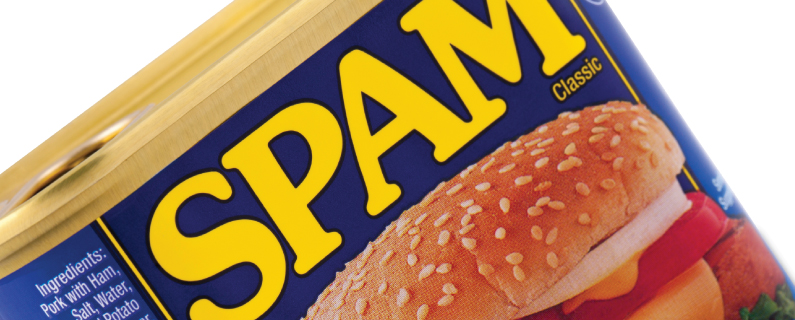
Very few things are more disheartening from a content standpoint than seeing an email go to spam, aka “email hell.”
Because of the amount of spammers and scanners out there, spam filters have become extremely scrutinizing and brutally rigid. Even the most well-intentioned email blast can fall victim to joining the ranks of those pitching cheap lasik surgery, free credit scores and easy drugs like an old-timey snake oil salesman.
It is hard to know exactly what to do to make the perfect email since, for obvious reasons, the programmers of these spam filters are pretty tight-lipped about what exactly they are looking for. There are, however, smart practices to email design and writing that will keep your spam score low. Sure, there are the somewhat obvious ones like avoiding all-caps, limiting excess punctuation and crafting effective subject lines, but here are a few other tips to help keep your emails from going to email hell.
Keep your contact list current
You’ve probably heard that you need to keep your contact list clean of addresses that constantly result in bounces, but have you ever questioned why?
An email that bounces is one that goes to an email address that is closed, non-existent or invalid. There is a reason your email reports tell you which are bouncing and it’s not for their own sanity, it’s for your own good. Bounce rate is a huge factor in determining whether an email – or an entire address – goes to spam. An account that has a lot of emails constantly bouncing tells the watchdogs a) you are just sending out emails with reckless abandon and b) most of your emails aren’t of a high quality.
Having a list of consistently landing emails will help all your emails going forward keep their credibility to the email powers that be.
Avoid purchased email lists
Yes, there are ways to purchase email addresses for the purpose of manually growing your contacts list. However, not only is this a super shady and somewhat despicable practice, but it can also keep your emails from getting to inboxes.
The people you reach (or don’t) from purchasing contacts more than likely have never heard of you and very probably don’t give a rat’s you-know-what about what you have to say. That scenario gives you two very undesirable conclusions. The recipient will either a) unsubscribe immediately – so you will have wasted your money – or b) report you as spam, putting a stain on your reputation and hurting any future emails you may send out.
Take my advice and just build your contacts the old fashion way – organically. This webinar can teach you how.
Write your email, and check it twice
It’s always the little things that will trip you up. The hurry to send out a new email may result in taking short cuts or not taking the time to really look over your email with a fine-tooth comb.
This results in spelling mistakes, and boy can they be nasty. As harmless as you think a spelling error is, even the slightest errors have resulted in the loss of millions. Your customers aren’t going to spend much time on your emails, they just aren’t. You have an extremely small window to grab their attention and make them click through to learn more before they close the email, never to open it again. A good impression is critical, and spelling mistakes – especially in the subject line – are not a good impression.
Not only will errors like this possibly cause people to report you for spam, but the errors themselves are a spam trigger as well. Always be sure to take the time to double or even triple check your draft before you submit it. A fresh set of eyes always seems to come up with something good.
Be mindful of your media
A common email practice is to have a download available within the email and to have images embedded in the email itself. This is absolutely fine and there is nothing wrong with that at all. However, like everything else you do in your email, just be careful how you go about doing these kinds of things.
If you are offering a download, never include it as an attachment to the email. This is a red flag to the spam filter. A better alternative is to include a call-to-action with a link to said download, form or whatever it is you are sending out. It is also important that you manage and keep the size of all images you include in mind. Another big red flag is extremely large images. This is another reason you should never include too much information in images or graphics within the email. The other being that more than 40% of people have image blocking enabled on their email.
Another helpful media tip is to avoid embedding any videos you may be including in the email itself. You are better off just including a still image with a link to the video elsewhere.
Interested in more ways to build a clean, spam-free email? Here are some more helpful tips.
